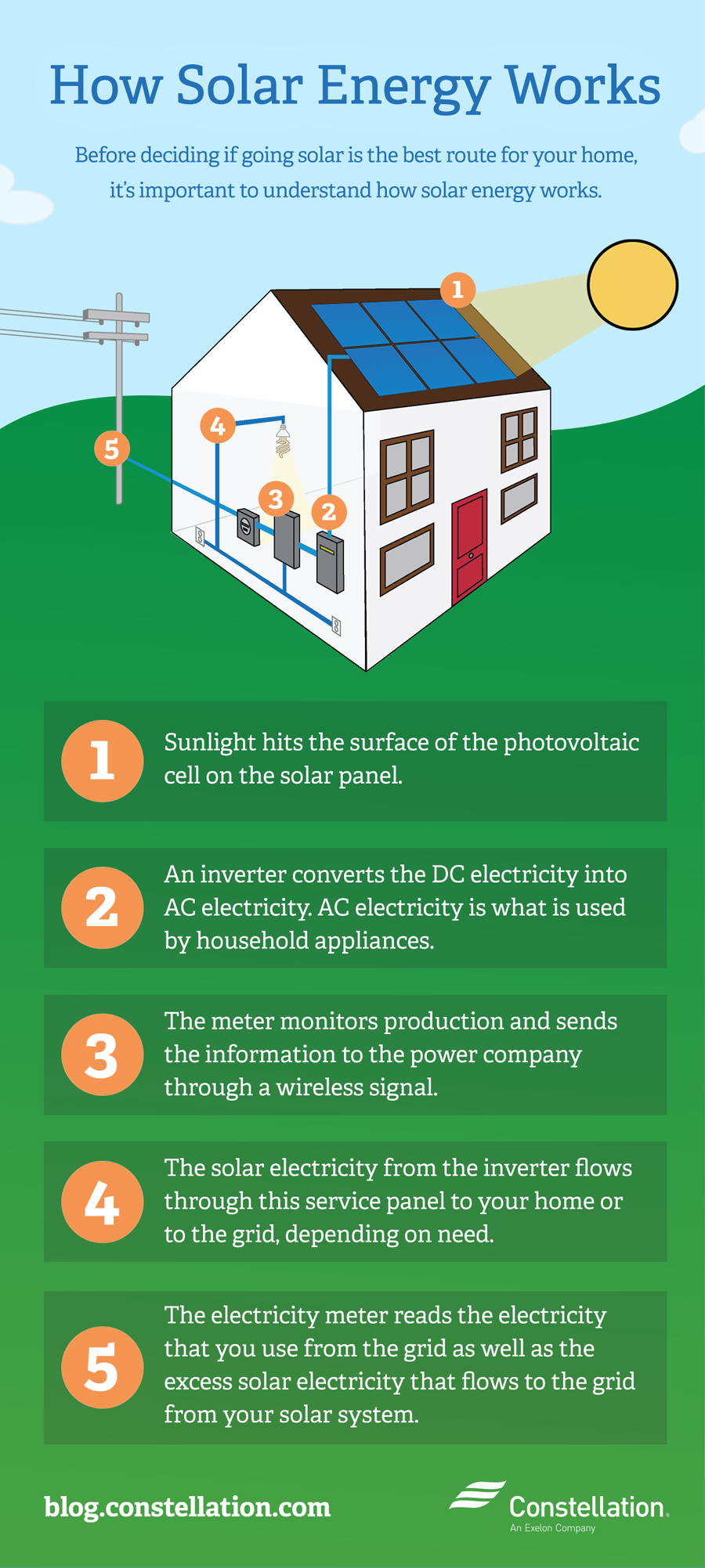How Do Solar Panels Work ? Usually, when light hits an object the energy turns into heat, like the warmth you feel while sitting in the sun. But when light hits certain. Other articles from scientificamerican.

We use this energy in multiple ways, including converting photons from the sun into electricity via photovoltaics. As NASA defines it, the photoelectric effect causes some materials to absorb photons of light and release electrons. That’s a technical way of saying that the panel’s photovoltaic cells convert the energy in sunlight to electricity (specifically, direct current (DC)).
As the cost of solar energy has plummeted in recent years alongside major improvements in technical efficiencies and manufacturing quality, many homeowners across the U. And as solar enters mainstream energy markets, the big question is, how do solar panels work? In this article, well break down exactly how solar panels produce energy for your home and how pragmatic going solar really is. See full list on news. A standard solar panel (also known as a solar module) consists of a layer of silicon cells, a metal frame, a glass casing and various wiring to allow current to flow from the silicon cells.
When light interacts with a silicon cell, it causes electrons to be set into motion, which initiates a flow of electric current. This is known as the photovoltaic effect, and it describes the general functionality of solar panel technology. In addition to silicon solar cells, a typical solar module includes a glass casing that offers durability and protection for the silicon PV cells. Under the glass exterior, the panel has a layer for insulation and a protective back sheet, which protects against heat dissipation and humidity inside the panel.
The insulation is important because increases in temperature will lead to a decrease in efficiency, resulting in a lower solar panel performance. Silicon solar cells are generally manufactured in two cell formations: monocrystalline or polycrystalline. Mono formats provide more room for electrons to move around and thus offer a higher efficiency solar technology than polycrystalline, though they are typically more expensive. Though electricity generation with solar panels may make sense to most people, theres still a lot of general confusion about how the grid factors into the home solar process.

Any home that is connected to the electrical grid will have something called a utility meter that your energy provider uses to measure and supply power to your home. The production of your solar system can actually be accessed and measured by this meter. Most homeowners in the U. If you have net metering, you can send power to the grid when your solar system is overproducing (like during the day in sunny summer months) in exchange for credits on your electric bill. Then, during hours of low electricity production (such as nighttime or overcast days), you can use your credits to draw extra energy from the grid and meet your household electricity demand. In a sense, net metering offers a free storage solution to property owners who go solar, making solar an all-in-one energy solution.
The more panels you deploy, the more energy you generate. Simply put, a solar panel works by allowing photons , or particles of light , to knock electrons free from atoms , generating a flow of electricity. Solar panels are composed of many smaller photovoltaic cells linked together.
What is solar energy and how does it work ? We hope you have had a good time exploring lots of energy topics with us! Centralised Groups of PV Cells are linked together to form panels. For years, SEI has been dedicated to training the global solar energy workforce. We deliver hands-on experience, safety, and technical skills solar training to scale the global workforce at a pace to that significantly impacts climate change — whether that’s equipping utilities with the skills to operate large-scale solar farms, or helping people access clean, reliable energy for the. Explore scholarly research in solar energy from Communications Chemistry.
Papers on solid-state chemistry, solar fuel, light harvesting and more. Find Solar Energy Jobs in your area at indeed. You want Solar Powere Works How. We shop and deliver, and you enjoy.
Solar radiation is light – also known as electromagnetic radiation – that is emitted by the sun. While every location on Earth receives some sunlight over a year, the amount of solar radiation that reaches any one spot on the Earth’s surface varies. Solar technologies capture this radiation and turn it into useful forms of energy. When sunlight hits the solar panels on your roof, they start to generate direct current (DC) electricity. Solar power works by converting light from the sun into electricity.
This electricity can then be used in your home or exported to the grid when it’s not needed. This is done by installing solar panelson your roof which generate DC (Direct Current) electricity. This energy is captured and then turned into usable electricity. Solar energy , in its simplest form, is energy which is generated by the sun.
Solar photovoltaic (PV) panels are based on a high-tech but remarkably simple technology that converts sunlight directly to electricity. Light from the Sun comes as ultraviolet, visible and infra red rays. Visible light is the spectrum of colours we are used to seeing. Solar works energy staff were more than just professional while working with me during the entire process of obtaining my solar system.
Publishing research in all areas of chemistry, including solar energy. Papers on trans it ion metal oxides, perovsk it es, tungsten oxide and more. GreenGuard Gold Certified.
No comments:
Post a Comment
Note: Only a member of this blog may post a comment.